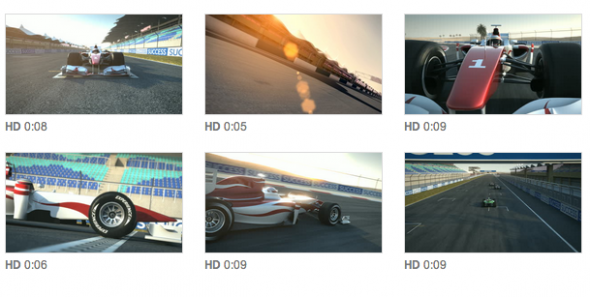The Original Crowdsourced Concept Now Offers Nearly One Million Pro-Level Clips
Online stock library Shutterstock has been in growth mode since it was founded in 2003, though one could argue that the addition of video footage in 2006 helped it turn a corner. At NAB last month, Ben Pfeifer, Shutterstock's VP of New Business, told me the total number of video clips offered by the "microstock" library had risen to more than 960,000, growing at roughly 800 a week. At last count, that figure was swiftly approaching nearly 1 million. "According to our CEO, video is now our fastest-growing business unit," said Pfeifer. "Our clients are asking for a range of styles, from the extreme slo-mo you get when shooting with a Phantom, to 3D animation, stop-motion and POV action footage like you'd shoot from a sky dive with a GoPro camera." Shutterstock was capitalizing on that trend at the show by raffling off a bunch of GoPro cameras plus $5,000 worth of other camera gear.
Founded by Jon Oringer, Shutterstock arrived a few years after the very first online stock footage company, iStockphoto. Oringer's twist was to combine a subscription-based online stock service with crowdsourced images, a concept that now puts the company's digital image sales ahead of both Getty Images and Getty-owned iStockphoto combined. Though Oringer even contributed some photos to the service in those early crowdsourced days, the company's rapid expansion has meant a full review and approval process keeps the submitted image and video content from both talented amateurs and professionals at an exceptionally high level. The total number of images, illustrations, vectors and videos in Shutterstock's archive is more than 25 million. In addition to keyword search, "New," "Popular," "Relevant" and "Random" tabs help users sort through it all.
Pfeifer attributed the company's success to the freshness of its content — much of it added daily — but also to the simplicity of its pricing plan. "Everything is one flat rate for one clip," he explains. That's $79 for HD (1920×1080), $49 for SD (852×480) and $19 if you're only going to be using it on the Web (426×240). "If you need five or more, we have savings package plans." Five HD clips, for example, cost $369, 10 cost $699 and 25 cost $1699, a savings of $276 off the flat rate.
"We also want to solve technology problems for our users," he added. "The most recent addition to every preview is the kind of scrubber you'd find in an NLE. Our customers can now figure out, frame-by-frame, if this footage will work for them before they buy it." Pfeifer said the company often conducts in-depth research sessions with its customers to find out what's crucial to their online searching and buying experience. The library also features a nice blog that includes written and video tutorials and tips like this recent post, on animating still images in After Effects, another useful budget-saving technique.
And when will 4K start finding its way into the stock footage market? "It's still very much in the background for the majority of our clients at this point," said Pfeifer. "But we're definitely keeping an eye on it."
